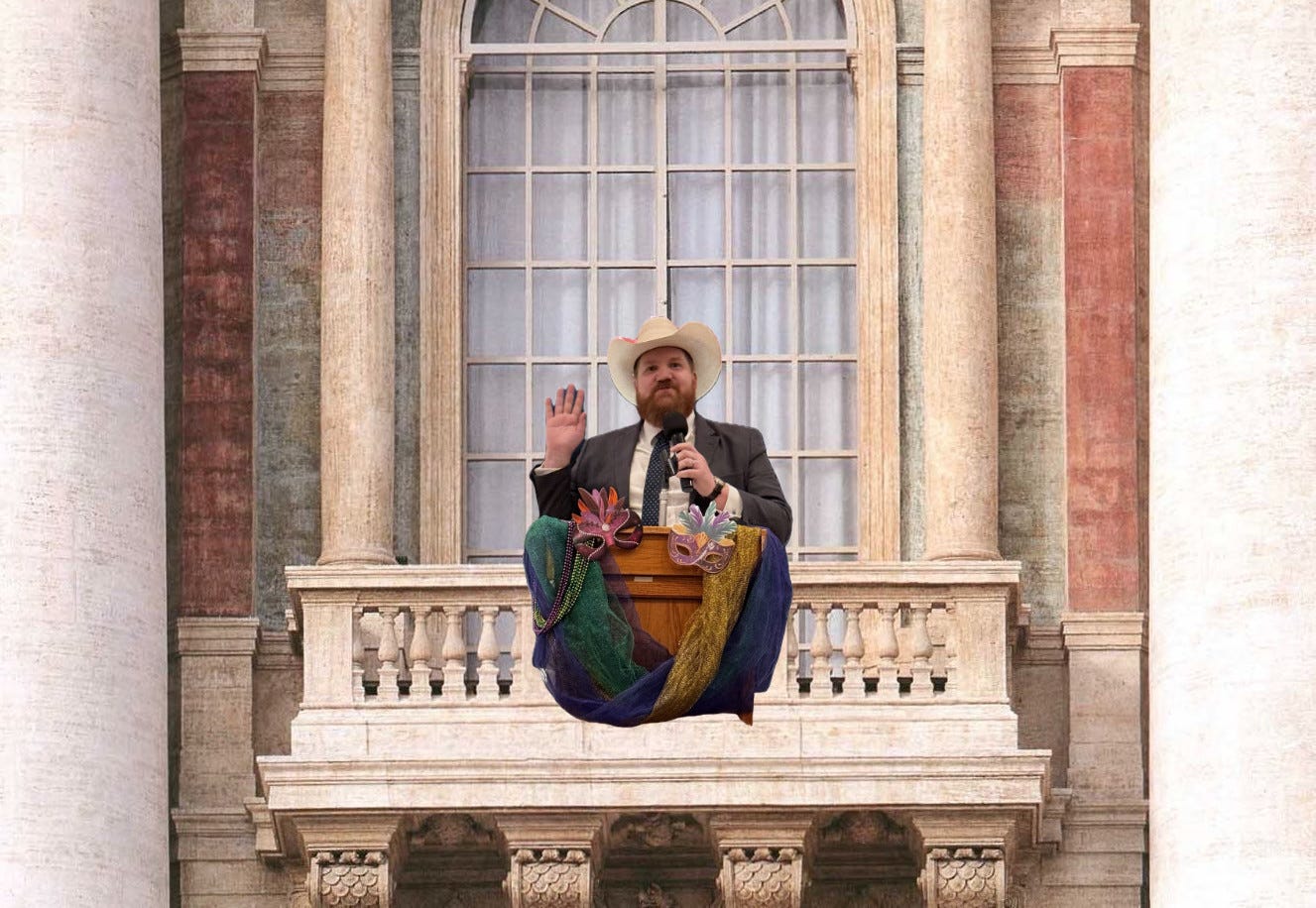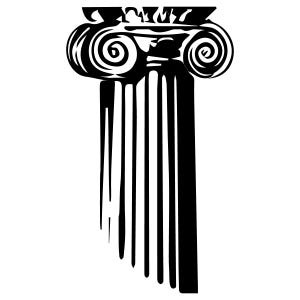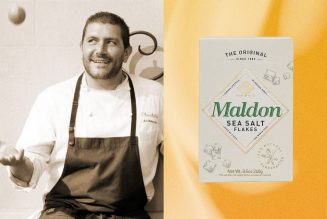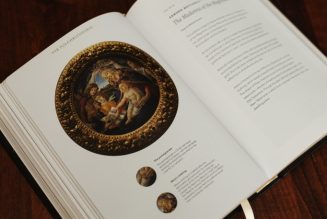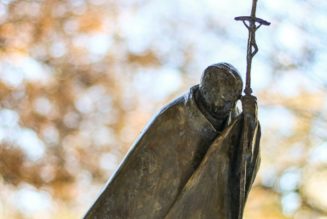Pillar subscribers can listen to this Pillar Post here: The Pillar TL;DR
Happy Friday friends,
Today is Friday of the fourth week of Lent, but tomorrow is the memorial of Blessed “John Anne” of England.
What we know about “Anne” is that he was martyred in York on March 16, 1589, for the capital crime of being a Catholic priest. But apart from the circumstances of his arrest and execution, we know little for certain about him — even the name is believed to be an alias under which he was traveling at the time of his arrest.
“John Anne” was arrested the previous year, having been apprehended in the house of a Mr. Murton, and after being imprisoned in York Castle he was executed alongside another priest, Fr. Robert Dalby.
Both men were beatified in 1929 by Pope Pius XI.
In line with the law of Bloody Queen Bess, the priests were hanged, drawn, and quartered. Which, for those of you who aren’t familiar, involved hanging the men until they lost consciousness, then disemboweling them — alive — on a rack, often burning their entrails in front of them on a coal fire, before dismembering their bodies and sending the bits on a tour of the countryside, pour encourager les autres.
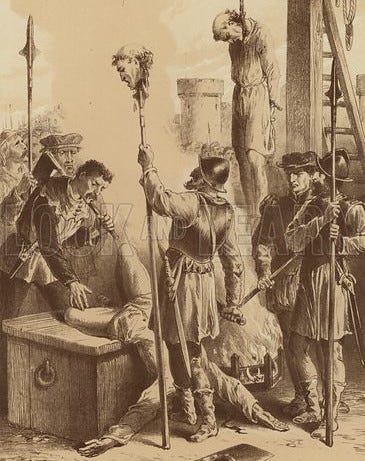
Anyway, the man we call John Anne is widely accepted to have been John Amais, a widower who, upon the death of his wife, divided his property among his children and in 1580 presented himself at the English College in Rheims, one of the exile seminaries which trained priests to work underground in England.
Amais was ordained the following year and sent back to England, where he dodged the priest-finders until his arrest.
It’s also thought by some that “John Anne” could have been William Anne, son of John and Katherine Anne of Wakefield, but we can’t really be sure.
Although he began giving a discourse from the scaffold proclaiming himself to be, as the saying goes, the Queen’s good servant and God’s first, before he could give a full account of his faith and mission, the executioner… cut him off, so to speak.
Blessed John, pray for us.
Here’s the news.
The News
Hong Kong is set to introduce a new national security law which human rights advocates are warning would seek to compel priests to violate the seal of confession.
Of course, the law is being brought in by Hong Kong’s chief executive, John Lee Ka-chiu, who is himself a Catholic.
The Diocese of Hong Kong issued its own statement this morning, saying that every citizen “has an obligation to national security,” and that “the legislation… will not alter the confidential nature of Confession (Sacrament of Reconciliation) of the Church.”
I’m not sure if they are making a claim about the law’s intended scope, or the limits of the Church’s compliance. I think it’s likely a studied ambiguity.
You can read all about the law here.
—
The bishops of Poland are meeting for their plenary session this week, and they have already elected Gdańsk’s Archbishop Tadeusz Wojda as their new conference president.
There is a lot on the table for the bishops to discuss, not least who their new leader should be, but also how they are going to engage with the new government, which is committed to reversing the country’s legal protections for the unborn.
Luke Coppen did a run down of the agenda, and what to make of it all, which you can read right here.
—
Antonio Becciu, brother of Pillar reader and convicted criminal Cardinal Angelo Becciu, is set to face charges in Sardinia after police concluded an investigation into alleged embezzlement of Church charitable funds.
They all insist they are innocent. Of course.
The allegations are connected to last year’s Vatican financial trial during which Becciu, the layman, and Fr. Curzu were repeatedly summoned as witnesses and failed to show in court.
Becciu, the cardinal, was convicted for (among other things) embezzling Church funds by arranging for hundreds of thousands of euros to be sent to bank accounts controlled by Antonio, who runs the Spes Cooperative, a Catholic charity in Sardinia.
The cardinal said during the trial that it is ordinary practice for Vatican funds to be deposited with individuals, including family members, for charitable purposes. Becciu, the cardinal, was convicted for breaking Vatican City and canon laws prohibiting the alienation of Church funds or property to family members.
—
At the end of February, bishops, vicars and deans from the nine dioceses of the Spanish region of Castile met to delve into the challenges facing the Church in their region of the country.
This holds true for Church affairs, too. It is not uncommon to see priests serving a region of 20 or more of those small towns, posing a growing challenge in a country where vocations are declining and the average age of priests is climbing.
So what is the future of rural ministry in Spain?
Edgar takes a look at the numbers, and the options.
—
A priest of Lafayette, Indiana, filed suit last friday, alleging his own diocese defamed him and violated their own policies by saying he had been accused of sexual misconduct with a minor.
There is a lot in the priest’s filing which makes you do a double take. But, while reading it, it is very important to keep in mind that this is very much only one side of the story. The diocese has not responded yet, in court or to us, but I have no doubt they will at some point.
And I’m certain there are a myriad of unknown-unknowns out there on this one. So I’d strongly caution against leaping to conclusions here.
In the meantime, the suit itself is still very much news.
For years, priests in this country have been critical of chancery processes and practices which, they say, throw them to the wolves at the first hint of an accusation — denying them any kind of due process or hope of recovering their good name if they are eventually cleared.
Several of them have told me the Lafayette case feels like some sort of a breaking point on that score, to them. Of course, if things shake out to show the diocese has acted with proper discretion here, it could quickly become something very different.
We will see, I guess. In the meantime, you can read about the lawsuit here.
—
Pope Francis announced on Thursday the creation of 10 new study groups, which will meet in coming months to discuss topics raised in the first global session of the Synod on Synodality.
Meanwhile, it was also announced yesterday, the second global gathering of the synod, to be held in Rome this October, will narrow its focus to the question of “How to be a synodal Church on mission?”
What does that mean?
You can read the full report here.
Seeking sanity from today’s political chaos? Look no further than The Dispatch. Founded by Jonah Goldberg and Stephen Hayes, The Dispatch offers trustworthy reporting and analysis that’s conservative but never partisan. Join 400,000+ readers who rely on journalism that prioritizes context, depth, and understanding. Subscribe today for a 90-day FREE trial.
Synod without end, for now
In the immediate wake of the new synodal documents and letter from the pope, published yesterday, I have seen a couple of different reactions gather steam from different sides of the synodal debate.
On the one hand, I have seen some people insist, unironically and perhaps predictably, that if there’s one thing the synod has made clear, it’s how much the Church is benefitting from all this synodality.
And so, they argue, naturally, the best possible thing the pope could offer the Church is more synodality, more process, more time, and more working groups and study documents to, as the approved phrasing has it, “enflesh” the spirit of the event.
At the other end of things, I have heard people insist that the pope’s commissioning of working groups to carry forward the synod’s most important/controversial agenda items into next year is a kind of synodal stitch up.
“Ah ha!” They have told me. “The pushback on [women deacons/changing Church teaching on homosexuality/married clergy/German federalization] last October was too overwhelming, too concerted. Even a hand-picked assembly won’t get behind the program so now they are taking it out of their hands and giving it to potemkin ‘working groups’ to deliver a reliable result.”
I’m going to be honest with you, I don’t think either is a correct read. And, details of the “how” to one side, the announcement of the groups this week is the least surprising thing to come out of the synod so far. At least to my mind.
Since before it properly got underway, I have been predicting that the pope didn’t see the synod as a set up for some decisive document to cement his legacy. I’ve always thought he both knew the process would produce conflicting, likely irreconcilable, agendas and that he didn’t intend to be the one to settle the inevitable showdown.
When a two-year global synodal process was unveiled in 2021, the pope was 84 years old and, I think, he considered it sufficient time to make its resolution a matter for his successor.
As his health has held up through his ninth decade, he’s progressively moved to extend the process — first by a year, adding an extra October’s worth of sessions, and now another by punting the synod’s most divisive talking points to working groups which will operate into 2025.
This seems to me necessary as he sets up what I have come to believe is his true desire for a legacy: a showdown conclave to elect his successor which he’s teeing up as a referendum for the cardinals on the direction the Church will go for the rest of the century.
Critics of Francis often accuse him of inflaming arguments and deepening divisions in the Church, across a range of issues. His biggest fans insist he’s an inspired leader, driving the Church forward through reactionary opposition.
But what I think they could both agree on is that Francis’ pontificate has surfaced, and thrown into stark relief, every lingering tension and argument in the Catholic communion since Vatican Council II.
Before Francis’ election, many assumed (maybe some hoped) that these debates would be quietly settled by the passage of time and the strength of personalities. But it’s now clear that isn’t going to happen.
A decisive turn will have to be made — forward or backward in time, towards or away from the Gospel, to right or to left, whatever directional image you prefer.
It will be Francis’ successor who makes the call, and picking the man to make it will be the primary, if not sole concern of the next conclave. Ahead of that, many have called for reform of the papal election process.
The other week, I endorsed here my own preference to see fewer votes and a more deliberative pace for the cardinals in conclave. Others, including those close (even closest?) to Francis have mooted more radical changes to make the papal interregnum more “synodal.”
But I would submit that, at this point, the pope has turned the synodal process itself into an extended, global, pre-conclave process. And with each new extension, I become more convinced this is by design, not accident.
However long it carries on, the current synod will eventually end. But what happens next will be decided in the Sistine Chapel, not the Paul VI Hall.
She’s a lady
I do not tend to weigh in on matters pertaining to the royal family. But Michelle and JD have prevailed upon me to do so this week, in the light of recent events.
Spoilt, work-shy, California-based dilettantes to one side, I tend to view the Windsors as providing an important public service in the U.K. And, like all public services, I tend to think they should just be left to get on with things, provided they’re more or less getting the job done.
I’ve been impressed with the King’s performance thus far, both in his maturing into the role for which he’s spent his whole life preparing, and with his ruthless dealings with his Epstein-adjacent younger brother.
And I have been concerned for his health, as he receives cancer treatment. Having bottled up Andrew at the bottom of the garden, and with Harry off playing Duke of Montecito among California’s scented-candle set, the working royal family have become thin in numbers, and we really do need the King to carry on for at least a decade, until some of the grandkids are old enough to be put to work.
It was with considerable concern, then, that we in our house learned of the Princess of Wales having to take some months off work to recover from surgery.
Though my wife and I were peripherally aware of the increasingly lurid and absurd internet conspiracy theories floating around Catherine’s indisposition, I had not really engaged with the details until this week.
This sort of nonsense is distinctly American, and nothing new. It often hinges on cultural tone deafness.
For example, I know a lot of Americans who noted that Catherine went for “planned abdominal surgery” which necessitated the canceling of already scheduled events.
“Ah-ha! How can something be ‘planned’ if you have to cancel stuff?!” I have heard the question asked with the kind of naive, righteous triumph I associate with Congressional committee members.
Well, you have to understand the language of non-American media, in which certain phrases are polite code. When a British newspaper refers to someone as appearing “tired and emotional” it means — and everyone reads it to mean — “falling over drunk.”
When it is announced that a royal or significant person in a public office has a sudden “planned” hospital visit, it means “nobody panic, please.” By way of illustration, Pope Francis made a similarly “previously scheduled” trip to the hospital this time last year, in the back of an ambulance, while exhibiting all the symptoms of a possible heart attack.
These kinds of cultural nuances tend to be lost on transatlantic readers, resulting in the sort of innocent, earnest, feverish speculation that people in other parts of the world find quaint at first, and then just vulgar.
In the old days, these things were left to incubate in the pages of publications found at supermarket checkouts, and there’s really no distinction of substance between headlines saying “Kate secretly dead” and “Hillary Clinton’s secret UFO baby” — though the latter seems more immediately plausible to me.
Things have been amped up considerably by the fever swamps of social media and popular delight in the Netflix series “The Crown,” which many have, bizarrely, bought into as a historical documentary, rather than a “House of Cards” style hyper-soap opera.
Regarding Catherine’s extended break from public view, people seem to think the longer it goes on, the more it’s proof that something sinister and outlandish is happening behind the curtain. Which is obviously nonsense, given it was announced from the beginning that the princess would be out of action until Easter at the least.
As a general rule, I think people who want to keep their medical details and recovery private have every reason and right to do so, especially if your day job is the world’s most important semi-scripted reality show.
The problem is, the royals have managed to make a total pig’s breakfast of it all this week, putting out an absurd, obviously doctored “new” picture of the Princess of Wales with her children for Mothering Sunday.
You can read a breakdown of the “tells” in the picture here, if you like, but suffice to say the total effect was about as convincing as this shot of JD being elected pope.
The amateur photoshopping of the royal image resulted in a ruinously embarrassing “kill order” from various wire and image services, and an even more patently silly statement on twitter.com from “Catherine.”
I put the name in scare-quotes because it seems obvious to me that of all the people connected with the royal household, the person least likely to have been involved in any of this is Catherine herself.
Snide and snobby comments about her airline stewardess mother notwithstanding, the real value of the princess to the Firm is that — finally — it has got a transfusion of some solid British middle-class values and common sense.
Catherine is probably the first and only person in the chronically insecure William’s orbit who doesn’t have a nickname like “Binki” or “Thicko” and whom he’s never tried to make call him “Sir.”
It’s exactly Catherine’s strata of society which still (somewhat) values the old ways of not letting it all hang out, not treating a delicate constitutional settlement as a platform to grandstand or virtue signal, and not generally behaving without a shred of self-awareness.
Not for nothing would I note that since Catherine has been out of action, William has started giving in to the kind of self-indulgent posturing and attention seeking (see his utterly unnecessary Gaza statement) he learned at his mother’s knee — something Catherine normally keeps a mercifully tight lid on.
For my money, the most likely explanation for “photogate” is that some witless Giles in Kensington Palace decided that pushing out a pic of a beaming Catherine for Mother’s Day was somehow essential, only to be told a firm “no meant no” by herself when she was asked to come out of pictorial purdah.
It would surprise me not one whit to learn that the ever-feckless William was then prevailed upon to greenlight a composite portrait behind her back, only to then have to shamefacedly ask his wife to own the gaffe, which she will have done out of a solidly middle-class sense of duty — one mustn’t grumble, after all.
The problem now is that the palace has managed to create a genuine issue out of National Enquirer nonsense.
Very little is actually wanted or needed from the royal family, other than that they exist and do so in a reassuringly constant manner. To do this, the previous Queen famously observed, they “have to be seen to be believed.” And now, thanks to the comical ineptitude of the Kensington Palace comms shop, nothing will be believed until Catherine is seen.
The only question in my mind, then, is if she’ll stick to her guns and remain off duty until Easter, or ride to the royals’ rescue and agree to sit for a photo session of herself leafing gratefully through the bags of Get Well Soon cards she’s received.
I hope she chooses the former. A lady has her dignity, you know.
See you next week,
Ed. Condon
Editor
The Pillar
Seeking sanity from today’s political chaos? Look no further than The Dispatch. Founded by Jonah Goldberg and Stephen Hayes, The Dispatch offers trustworthy reporting and analysis that’s conservative but never partisan. Join 400,000+ readers who rely on journalism that prioritizes context, depth, and understanding. Subscribe today for a 90-day FREE trial.
Comments 28
Services Marketplace – Listings, Bookings & Reviews


